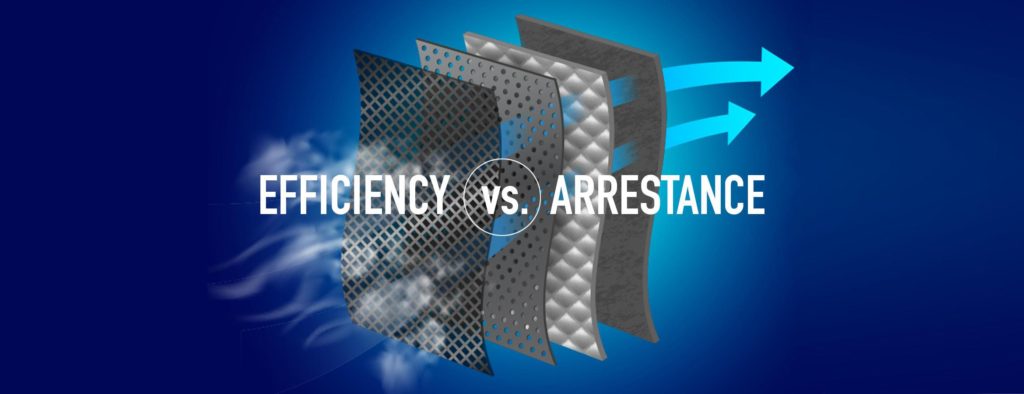Air Filter Functionality: Efficiency vs. Arrestance
Commercial air filters remove particulates and gaseous materials from your airstream providing a safer environment for both your workers and machinery. The terms “efficiency” and “arrestance” are used to describe an individual air filter’s functionality.
What is Air Filter Efficiency?
For example, air filter Efficiency measures how well your filter removes microscopic particles such as dust, pollen, mold, bacteria, dust mites and smoke from your airstream.
The filtration industry’s standard test method is ANSI/ASHRAE 52.2 which measures the ability to remove the staining portion of atmosphere dust from test air; also known as Atmospheric Dust Spot Efficiency. These testing standards were created by the National air Filtration Association (NAFA).
What is Air Filter Arrestance?
Air filter Arrestance measures the ability of commercial air filtration to remove synthetic dust from your airstream for larger particles such as dirt, lint, hair and dust. A filter’s dust-holding capacity equals the amount by weight of standard dust the filter holds without exceeding the resistance 0.18 in W.G. (inch water gauge) for low-resistance filters or 0.50 in W.G. for medium-resistance filters and 1.0 in W.G. for high-resistance filters.
Health Hazards & Particle Sizes
Size contaminants and particles are normally depicted in microns; a metric unit of measure where one micron is one-millionth of a metre. In imperial units 1-inch equals 25,400 microns. Typically, the human eye can see particles that are larger than 40 microns.
In comparison, should you have burning wood in your airstream that represents particle sizes of 0.2 – 3 microns vs. beach sand that is 100 – 10,000 microns. Airborne particles are larger solids suspended in the air such as snow, room dust, sand and sea spray. Medium-sized particles include pollen, hair, windblown and coal dust. Small particles take days to years to settle out of a quiet atmosphere and they include viruses, small bacteria, metallurgical fumes, as well as oil and tobacco smoke.
Inhalable dust and airborne particles which enter the nose and mouth are typically of 100 microns in diameter or less and are hazardous to humans. Thoracic dust can reach the lungs and are 10 microns in diameter or less. Respirable dust penetrates the gas exchange region of the lungs and are less than 5 microns. This gives you a good idea of how critical your commercial air filters really are for the health and safety or your employees and equipment.
Conclusion
Because there are numerous types of commercial air filters including washers, dry filters, flat panels, continuous roll, bag filters and High Efficiency Particular (HEPA) filters to name a few, it is crucial that you speak with an experienced manufacturer. EFS provides the most advanced technology and development to deliver the highest-quality, air filtration products at the lowest possible cost. Call EFS today.
Air Filter Functionality: Efficiency vs. Arrestance Read More »

